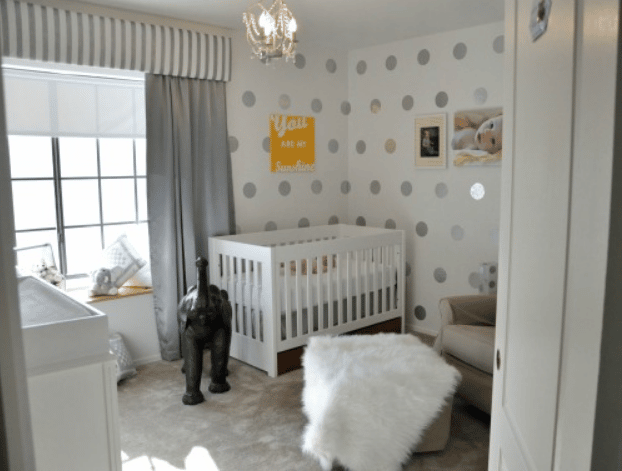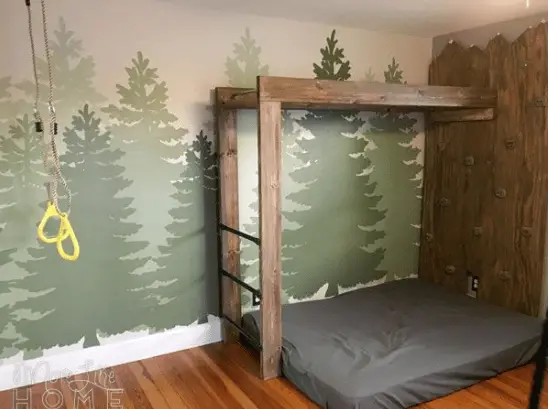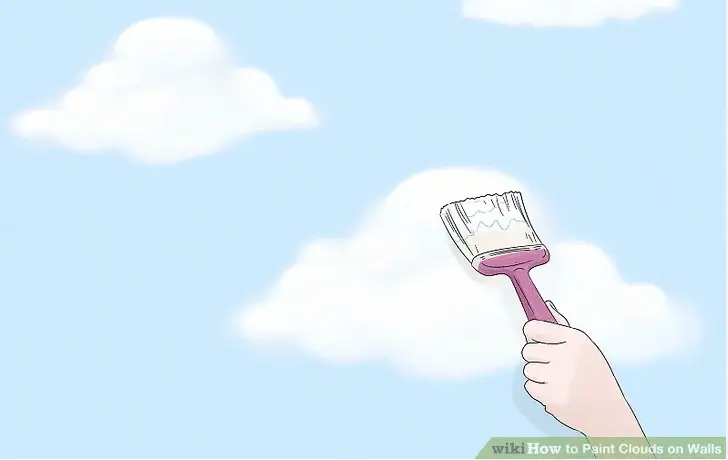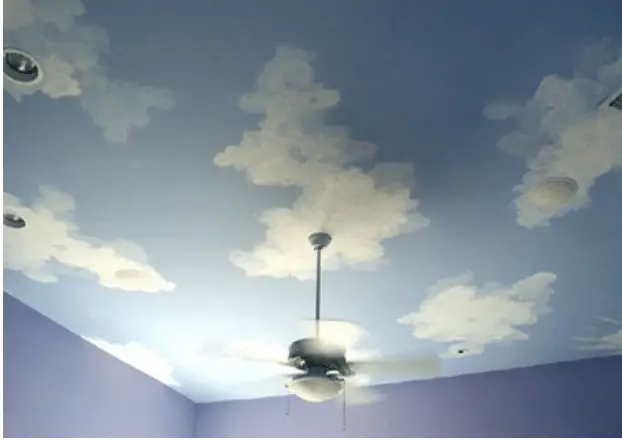You’ve got a new baby coming, and you need to decide how to paint their room. Do you want stimulating colors or calming ones? Which colors are the most exciting or calming? Is it a boy or a girl, or should you pick neutral colors for now? Here are some Baby Room Paint Ideas to help you figure out this critical step in your child’s development and in your interior decorating.
1) Stencils
When you paint your baby’s room, you want it to be energizing for them, at least part of the time. One way to create an exciting room, no matter what paint color you choose, is to get stencils like these from Amazon and paint cool patterns on the walls and furniture. Since this stencil pack has a variety of shapes, you’ll get to see over time which shapes your baby likes the most, instead of guessing and hoping the baby doesn’t end up being afraid of the trucks you stenciled everywhere.
2) DIY Polka Dots
You don’t necessarily have to choose just one color for the baby’s room. You can pick two or more colors, or even pick two contrasting colors to create patterns that will be interesting to the baby. If you have a newborn, you’ll want to use dark colors. Otherwise, you can pick something like the shiny gray used by Michelle in this nursery remodel. Either way, you can use her instructions to paint polka dots around your baby’s room.
3) DIY Mountain Mural
A mural probably sounds like an intense and artistic endeavor, but if you do a simple enough design, anyone can make a mural that will make the baby room more entertaining for your child. The mural will give them something to look at for enjoyment, and the simple shapes in it will be more stimulating than something softer and more subtle. Try using this video to paint an easy mountain mural for your child, if you like mountain scenery.
4) DIY Forest Mural
If you’re not a fan of mountain scenes, or you don’t think they work in a baby bedroom, this forest scene may work better for you. Try painting the baby’s room with a forest mural using the description in this article. This will give the baby plenty of stimulating images to look at, and if you have a newborn, you can choose black and white instead of forest greens, since they’ll only see the black and white.
5) Background Color
If you want to add decals and decorations to your baby’s room, you’ll need to take those into account when you pick a paint color. You might try picking a very dark color if you’ll have glowing stars and other glow-in-the-dark stickers and decals like these on the walls and ceiling, or a very light color if you’ll have dark decals that will be visible on the lighter surfaces. This will create contrast and make the images more interesting to your baby.
6) Green
If you’re having a boy, but you don’t want to go with a traditional blue, try painting his room green. The green is still a boy’s color, but it isn’t as overused as blue, and it still has a cool and calming tone that will help your baby sleep at night. Make sure to choose a calming tone of green like this one, since a bright green could keep the baby awake and interfere with both your sleep and the baby’s sleep.
7) DIY Geometric Accent Wall
Patterns are great for baby’s bedrooms. You’ll want plenty of textures and patterned furniture and toys, and you’ll love for the walls to have designs instead of being a single color. You can watch this video by Anika’s DIY Life to learn how to make a geometric pattern on your baby room’s walls. This pattern will be stimulating for the baby, and if you have a newborn, you can use black and white, since they can’t see color initially.
8) Yellow

If you don’t know if you’re having a boy or girl, or if you want a gender-neutral room, you’ll want a gender-neutral paint color. Try painting the room yellow, as the room in the picture is, or paint part of it yellow. Creating designs with multiple colors, like polka dots or other patterns, will also achieve a gender-neutral effect. Once you learn the baby’s gender, you can keep the paint color the same, and add other decorations in traditional pink or blue if you want to.
9) Animals
Babies and small children tend to love animals, so there’s a good chance the baby will love animal stencils for some time to come. Get an elephant or other animal stencil like this from Amazon, and you can paint elephants marching around the room. This also gives young babies something fascinating to look at, rather than unadorned or single-colored walls that tend to be less stimulating. These are also great because they don’t have a dense pattern that could be overwhelming for the baby.
10) DIY Paint the Door Differently
Babies need stimulation to help their minds grow, but they also need sleep. This can make it challenging to pick which is best for a baby room; stimulation or sleep? Try painting a majority of the room in cool colors like blue to promote sleep, but add a little bit of warm color to stimulate the child. You can do this most easily by painting the door in a warm color using the guidance in this video.
11) Purple
If you’re having a girl, but you don’t like the traditional pink, try painting your baby’s room purple instead. Purple is a feminine color, but it also works as a somewhat neutral color rather than a bright and overly feminine color like pink. A medium purple like this is great because it’s not too dark or light to cover a large area like a bedroom wall, and the color isn’t bold enough to upset your baby.
12) DIY Wall Clouds
Patterns and natural designs are great ways to decorate baby bedrooms, since the natural images will stimulate and teach them, and the patterns will give them something to look at. Try using this tutorial to paint clouds on the baby’s wall. This will look interesting and give the baby something exciting to look at, and you can make the edges bolder if you want the baby to see the clouds more easily. For a newborn, make sure the background is dark since newborns can only see black and white for some time.
13) Pink
Pink is the most traditional color for a baby girl, so you may want to paint your daughter’s room in a pastel pink like this one from Amazon. The color is subtle, so it won’t be overstimulating for the baby, but you can also paint the walls a cool blue and use this paint for furniture. Chalk paint works well on furniture, giving the furniture pieces a chalky pastel color that’s great for an infant’s bedroom.
14) Chalk Paint
Chalk paint is a great paint choice for furniture, and it works particularly well in a baby’s bedroom. The chalk paint has a pastel look that can be soothing for a young child, and you can pick any color that works for you. Watch this video by Kacha to learn how to use chalk paint properly, and paint your baby’s room with any chalk paint color you want. Try soothing neutrals, since this paint is naturally calming.
15) Music
Do you like music? Most people do, and it can be soothing and enjoyable for babies as they grow up and hear various music. This shared love of music makes musical notes the perfect idea for painting your baby’s bedroom. You can use stencils like these ones from Amazon to paint musical notes on the walls. These are a particularly great choice since musical notes lend themselves to black and white color choices, which is best for young babies who can’t see color yet.
16) Blue
If you prefer a traditional color, and you’re having a boy, you’ll want a blue bedroom. You’ll also want a blue bedroom if you’re worried about promoting sleep since blue is the most calming color choice. Choose a cool blue like this one from The Home Depot so that it’s not too dark or too bright, either. If you prefer gender-neutral colors, but like the idea of promoting restful sleep, try greens. This paint also has little odor, which is great for a sensitive child.
17) Patterns
Your baby’s room will need to be calming enough for them to sleep, but stimulating enough to keep their mind occupied when they’re not sleeping. One way to keep their mind engaged is with patterned walls. When you paint the room, look for stencils like these ones from Amazon that create patterns on the walls or furniture. These might be a little bit dense, so you can try using them on furniture and doors instead of on the entire wall. You can also use them to paint an accent wall.
18) DIY Ceiling Clouds
Painting clouds is a great way to add interest to your baby’s ceiling. Adding clouds will be more realistic on the ceiling, and having a natural scene will be an excellent lesson for the baby. It’ll also make the room more interesting and stimulating for the baby. Try using this tutorial to learn how to paint clouds on ceilings, since it can be a difficult task. If you choose a darker blue, it’ll create contrast, too, which will be more interesting for the baby.
19) Stars

Stars are always a fun children’s room idea since a lot of kids are fascinated by them as adults. While a planetarium theme might be a little much at this age, you can paint stars on your baby room’s walls to give the baby something fascinating to look at. While the stars in this picture are gray, you’re actually better off painting them black on a white wall for a newborn, since they can’t see color right away. Otherwise, you can pick any color that will draw your baby’s eye.
20) White or Light Colors
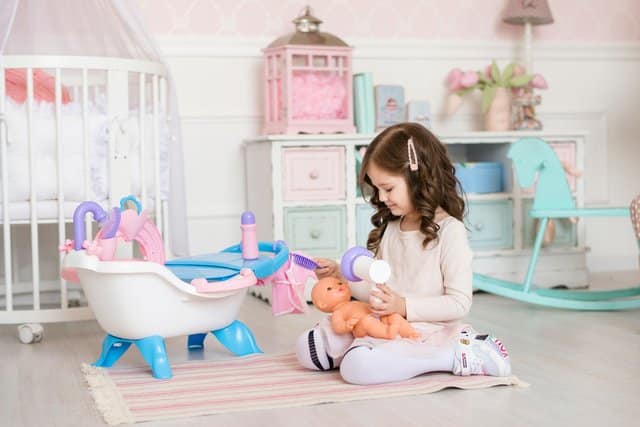
Sometimes the wall paint isn’t the paint that stands out the most. One way to use paint in a baby’s bedroom is to paint the walls white and then paint some of the furniture in different colors. This lets the furniture stand out, and this way, you don’t have to repaint the room if your child gets older and decides they hate the color. If you don’t like straight white like in the photo, try using light colors that complement the color furniture you expect to use.
Do you want a gender-neutral room or perhaps a more traditional one? What patterns are you thinking about adding to your baby’s room? Please tell us about it in the comments below!


